
MKSheppard
-
Content count
154 -
Joined
-
Last visited
Posts posted by MKSheppard
-
-
-
Another author also made many of the same points, quite a while before Tommy Thomason:
Illusions of Choice: The F-111 and the Problem of Weapons Acquisition Reform by Robert F. Coulam.
He makes a lot of good points; including the one where the USN IIRC had a F-111B dogfight with a F-4 while laden down with it's full warload of Phoenix AAMs -- that's six tons (!) of missiles, while the F-14A got to dogfight with the F-4 with a mere 2.2~ tons of weapons (4 x Sparrows and 2 x Sidewinders)
-
I'd like to see:
1: Better avonics. Nothing totally detailed; just some simplistic radar bombing mode that makes all weather attacks with A-6s and F-111s possible; or high altitude bombing by A3D Skywarriors possibule.
2.) Configurable "best altitude" for each plane/campaign when you use ALT-N. As it is, you have to set a global parameter in the game right now, and what might be fine for low altitude eastern front fighting doesn't work for B-17 raids; or for 1950s high altitude bomber attacks.
-
MEMORANDUM FOR THE DEPUTY SECRETARY OF DEFENSE
SUBJECT: (U) Weapon Systems Information
1. At the briefing on Monday, 13 July [1959], on selected Air Force Weapons and the Objective Force, you evidenced further interest in the Minuteman and F-108 Weapon Systems. The attached inclosures contain the information you requested.
2. In specific regard to the F-108, a core complete briefing has been prepared on the requirement for the system and status of its development. The briefing requires 45 minutes. This presentation can be scheduled for you at your convenience.
THOMAS D. WHITE
Chief of Staff
2 Incls
1. Justification for F-108/GAR-9 Weapon System
2. Minuteman Development Objectives
Justification for F-108/GAR-9 Weapon System
It has been stated repeatedly that too much of our defense budget has been programmed into what appears to be a fading threat, i.e., the manned bomber. The Air Force, in fact, has reduced its goals for manned interceptors drastically. Specifically, in 1957 we were planning on 5,200 fighter interceptors for 1963; in consecutive adjustments we have cut from this figure to 2,000 in 1963, with further reductions by 1970. For the foreseeable future, however, it appears that there will continue to be, in significant degree, a Soviet bomber threat against this nation. The projected capability of that threat is 65,000 feet altitude at speed of M 2.0 - 2.5. Accordingly, there will continue to be the requirement for a modern manned interceptor to perform those air defense operations beyond the capability of the air defense missile, and to provide flexibility which will allow us to concentrate fire power in areas where missiles have been expended.
What is perhaps not clearly understood is that the F-108 represents a complete departure from contemporary aircraft design. It is constructed to cruise at 2000 MPH (to its full range). By new techniques we are able to make this high performance aircraft behave properly at lower speeds far safe takeoff and landing. Of special interest to you, I believe, is that the basic design of the F-108 permits its use as an offensive weapon as well as an exceptionally versatile defense fighter. In the offense role it can carry the recently developed family of small, high yield weapons, or modern reconnaissance devices. Its missile bay is equal in size to one of the two bomb bays in a B-47 bomber. Here we have additional application to the problem of limited war. The range and speed of the F-108 permits its deployment to Formosa, for example, in 4.3 hours.
You will note there are no funds in our FY-60 program for contemporary interceptors. FY-59 bought out the last of the F-106 and F-101 series. We are placing dependence on the F-108 to meet the requirements for a multi-purpose fighter aircraft for the future. Our funding requested in our FY-60 program provide a for development of this aircraft as a long-range interceptor and air defense missile launcher. Its ability to cruise out or patrol far beyond fixed defenses and challenge marauders far from our borders is in consonance with the Air Force approach to air defense in depth. The advanced performance of the F-108 from both military and technical standpoints is also consistent with the vital need for the U. S. to maintain an optimum balance and effective relationship between offensive and defensive air capabilities. In short, the battle against Soviet nuclear offensive forces threatening the West, whether manned aircraft or missiles, should start in Soviet territory, not ours.
In summary, it is the only really new fighter aircraft in the Air Force development program. Its growth to a truly global fighter capable of rapid deployment to fight or to fend off attack makes it, in my judgment, one of our most important new weapons.
-
who can out turn who at mach 2 :)F-108 was designed to cruise at Mach 3, just like the B-70. Otherwise, it would have been useless as a escort fighter.

-
weren`t mig25s tracket with mach 3 over israel?From a Yefim Gordon book published by Midland on the MiG-25 recon detachment sent to Egypt:
Sorties over Israeli-held territory involved cruising at full military power for about 40 minutes. The air temperature in the engine inlet ducts peaked at 320°C (608°F); the aircraft skin was not much colder either (303°C/577°F). By then, the Tumanskiy OKB had extended engine running time in full afterburner from three to eight minutes and then to 40 minutes. Thus, virtually all sorties could be flown at maximum thrust; the R15B-300 turbojets proved reliable enough and gave no problems in the hot Egyptian climate.....
Missions were flown at maximum speed and 17,000-23,000 m (55,770-75,460 ft). At this rate, no one could keep up with the MiG-25, and it was just as well because the reconnaissance aircraft were unarmed. The fuel was burned off at a rate of 500 kg (1,102 lb) per minute, reducing all-up weight, and the aircraft would gradually accelerate to Mach 2.8.
.......
Certain photo and cine shooting modes required the camera ship to keep a constant speed. Another complication was that the MiG-25 was constantly climbing as fuel burnoff reduced weight, reaching 22,000 m (72,180 ft) at the end of its target run. In addition to taking pictures, the MiG-25Rs and MiG-25RBs pinpointed Israeli radars, communications centres and ECM facilities.
....
As an excuse for their inability to intercept the elusive MiGs the Israeli air defences stated that 'the object was clocked at Mach 3.2! However, the flight recorders of the MiGs showed there were no major deviations from the prescribed mission profile. Well, yes, the aircraft were not always flown 'by the book'. On one occasion Aleksandr Bezhevets exceeded the speed limit to get away from pursuing Phantoms; the flight data recorder showed that the Mach limit had been more than tripled (!). Other sources state that it was VVS pilot Krasnogorskiy who should walk away with the record (and get the ticket), as he reached 3,400 km/h (2,111 mph) in one of the sorties. This was dangerous because the airframe could be damaged by overheating, but careful inspection of the aircraft showed no apparent damage. Still, the pilots received an unambiguous 'debriefing' after this incident.
The cases where NATO thought Mach 3+ MiG-25s were streaking over Europe to ditch in the North Atlantic were in fact expendable Tu-123 drones which overflew europe.
-
Gonna be mighty hard to catch a B-70A doing Mach 3.1~ at 85,000 feet. Yes, the production B-70A was to have a lot higher ceiling than the XB-70
-
MOAR!
Also, do the B-70s have DAMS; with on board AIM-47 Falcons to shoot down incoming fighters?
-
Now now, guys, don't expect speedy progress; since I'm not a very crack 3D Modeller; and I haven't really done any animation yet until now; but here's the results of a few hours of banging around:
Basically, this is Douglas' entry to the B-29 requirements -- it's even bigger than the B-29, and a later redesign had it emerging with R-4360s

-
Actually, I read a book once that made the case that the Navy unfairly handicapped the F-111B. Sure, it was no F-8 Crusader in dogfighting, but neither was the F-4 or F-14A.
It also pointed out that the F-14A suffered from cost and weight growth issues to the same extent that the F-111B did; and was handicapped by engine problems -- like the F-111B.
It also pointed out the fact that the Navy played tricks with the loadouts for the F-111 and F-14 in ACM; the F-111 was expected to do ACM with a warload of at least four Phoenixes; that results in about 4,000 lbs of weight; versus four sparrows and two winders on the F-14; bout 2,400 lbs of weight.
In the end, the Navy killed the F-111B because they really really hated the fact that McNamara had forced it on them from outside their regular procurement channels.
-
-
Let me guess, it was a backup plan if/when the B-1A project collapsed (salvaging the power plant and probably the parts of the avionics that were working as per specifications) ?It started out as a sort of indepenent project by the manufacturer I think to compete with AMSA specifications, and it sort of gained traction when the B-1A program collapsed -- the commander of SAC actually did support it -- I think his thinking was:
"This will get me a plane that will be 2x better than a FB-111A, and capable of at LEAST some shallow penetration of Soviet Russia; but when it comes time to buy a new manned heavy bomber (like B-2), it won't compete for funding since it's in a totally different weight class."
-
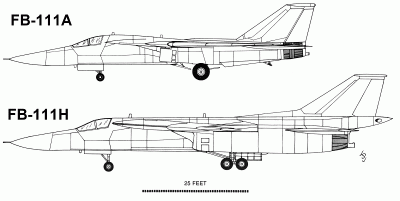 You guys all forgot the ULTIMATE VARK:
You guys all forgot the ULTIMATE VARK:FB-111H!
By Comparison:
FB-111A:
2 x Turbofans, 12,500 lb dry, 20,350 lbs with afterburner.
1,453 MPH @ 50,000 feet max speed clean
1,320 MPH @ 36,000 feet max speed clean
838 MPH @ Sea Level Max speed clean
50,263 ft service ceiling
2,500 mile range with four SRAMs and internal fuel.
2 x SRAM internal bay.
FB-111H:
2 x F101 Turbofans; 17,000 lb dry, 30,000 lb with afterburner.
1,055 MPH @ 36,000 feet maximum speed
650 MPH @ 200 Feet maximum speed
5 x SRAM Internal bay (one source)
or
12 x SRAM Internal Bay (one source)
-
F-111B!

Hey, If you need additional help to do the F-111B; I suggest you consult it's standard aircraft characteristics sheet
-
F-111B!

Hey, If you need additional help to do the F-111B; I suggest you consult it's standard aircraft characteristics sheet
-
Book is "Valkyrie: North American's Mach 3 Superbomber" and yes it's still available
-
Is that RCS reduction, or increase? 100sqm is big, 100,000sqm is an aircraft carrier. I don't know much about this subject so lala...That plume in the back, big IR signature especially in the clear cold dry air near space.
Reduction.
As for IR Signature. Not as big as you might think:
From a book on the B-70:
Of course, the airframe itself was a thermal target because of the frictional heat generated during Mach-3 flight. As part of it's research, North American developed a "finish system" (i.e., paint) that provided a low emittance at wavelengths used by soviet infrared detecting devices, while radiating most of the excess heat from the surface of the airframe in wavelengths not normally under surveillance. The finish used a low emittance basecoat with an organic topcoat that was transparent to energy in the 1 to 6 micron range. The top coating was strangely opaque and highly emissive at wavelengths between 6 and 15 microns. This finish was relatively invisible to infrared detecting equipment, while still allowing the skin to radiate excess heat overboard to maintain its structural integrity.144The first attempt at defining the finish system brought new meaning to the term "gold plated," literally. A gold substrate was applied by electro-deposition to the aircraft; where the gold was applied directly over titanium, it would be baked on at high temperatures under infrared lamps. This was followed by an overlay of Kel-F No. 800 resin coating, and the entire aircraft was baked under infrared lamps. The coating demonstrated some reduction in emittance from the treated test panels, leading North American to believe they were on the right track, but obviously better coatings would need to be found. The gold substrate was only 0.00002-inch thick, but given that there was 17,000 square feet of surface area on the B-70, it still would take 31.7 pounds of the precious metal to cover the entire aircraft. Even at the official $32 per troy ounce price in effect at the time, this equaled $12,173 per aircraft, per treatment. An additional 15 pounds of nickel plating was used in areas that could not be covered with gold, and 187 pounds of Kel-F No. 800 topcoat were used.
-
So when do we get to burn through enemy defenses at Mach 3.0 at 85,000 feet?

BTW:
Actually, the RCS of an aircraft is not a single number. The RCS is different for each "look-angle" (i.e.. direction from the threat radar). When graphed in polar coordinates, RCS appears as shown in Fig. 8.14. This is actual data for the B-70 supersonic bomber. As can be seen, RCS varies widely from different directions, by almost four orders of magnitude for this design.We use the expression "spikes" to describe directions from which the RCS of an aircraft is very high. These are typically perpendicular to the leading and trailing edges of the wing, perpendicular to the flat side of the aircraft unless it is properly shaped and treated, and directly off the nose and tail due to the inlets, nozzles, radome, and other features. For the B-70. huge spikes are evident to the sides perpendicular to the big flat sides of the nacelle. However, with a cruising speed of Mach 3.0 at almost 80,000 ft {24,300 m}, it would be difficult to intercept a B-70 that was already flying past. Unfortunately, there are also substantial spikes just off the nose, perpendicular to the leading edges of the canards, which have fairly low sweep. These spikes would have warned defenders that a B-70 was coming. As shown, treatment with RAM was under serious consideration for operational B-70s. This would have reduced the nose-on signature by several orders of magnitude.
-
Where......did you get that B-36 Peacemaker? Six Turning Four Burning?


I WANT IT!!!
-
Okay guys; here's the information on the planned PRODUCTION model B-70A Valkyrie for the mod that's been in the works for a while....
See; there were to be three aircraft built originally for the program, plus production models.
Air Vehicle #1; which became the XB-70A.
Air Vehicle #2; which became the XB-70B.
Air Vehicle #3; which was to be the YB-70, and would carry a sort of early bomb nav system and have a four man crew -- basically to test out the early prototypes of the radar etc and to do bomb drop tests.
However, A/V 3 was cancelled, and errors in the construction of air vehicle #1, caused one of the fuel tanks to be permanently sealed off (it leaked like crazy); and a speed/altitude limit to be imposed (due to it using early production honeycomb skin); meaning it was restricted from sustained Mach 3 flight (it could hit it for short bursts), due to skin problems.
A/V #2, being built later in the program, benefited from the mistakes made in A/V #1's construction, and was significantly better performing due to the problems with the stainless steel honeycomb construction being corrected. It proved that the B-70 as designed could cruise indefinitely at Mach 3 as long as it had fuel by doing a 30 minute flight at Mach 3 (which was when the engineers calculated maximum skin expansion and heating would occur). However, before we could fully explore the envelope of Mach 3 flight, A/V #2 was lost in a mid-air collision.
A/V#1 went on to do some research for NASA before being flown to the USAF Museum.
So. Enough talking. Here's the Statistics for the XB-70A, which you see most commonly quoted (the specs are from Baugher).
Maximum speed 1982 mph at 75,550 feet, 1254 mph at 35,000 feet. Landing speed 184 mph.
Service ceiling 75, 500 feet. Initial climb rate 27,450 feet per minute.
Combat range 3419 miles, maximum range 4290 miles.
Dimensions: Wingspan 105 feet, Length 196 feet 6 inches, Height 30 feet 8 inches, wing area 6297.15 square feet.
Weights: Empty weight 231,215 pounds, 521,056 pounds gross weight, 534,792 pounds maximum.
You can compare them with the B-70A model shown here.
EDIT: By the way, don't be disturbed by the 10,000 lb load for the "Design mission". That's a common "special weapons" load for nuclear armed aircraft; the B-52's "design mission load" is also 10,000 lbs.
-
that WoE had, allowing you to import WoV or SFP campaigns and aircraft if you had it on your hard drive?
-
I have a ton of data compiled for the b-70 flight model.Keep in mind that the production B-70s would have flown higher and faster, with a top speed of Mach 3.2 or 3.3 around 80,000+ feet. XB-70 A/V 1 was limited to Mach 2.5 because of issues with skin separation. A/V 2 had no problems, and could cruise at mach 3~ with no problems, but was lost before it could fully explore the B-70's flight regime.
-
Also, if I did make a recon SR-71, would anyone be interested in a fictional strike version with internal weapons bays?
Uh. Wrong. They weren't FICTIONAL. They were REAL.
F-12B - OPERATIONAL VERSION OF THE YF-12A, USAF WANTED 93 F-12B. ORDERED INTO PRODUCTION 14 MAY 1965. ARMED WITH 4 X AIM-47S. TOP SPEED OF MACH 3.5 (2,600 MPH) AT 90-100,000 FT. CAPABLE OF DESTROYING BOMBERS AT ANY SPEED OR ALTITUDE MORE THAN 100 MILES AWAY.
2 MAN CREW
2 X PW J58 MODEL JT11D-20A 34,000 LBS EACH
70,000 LB EMPTY
125,000 LB GROSS WEIGHT
101 FT 8 IN LENGHT (31M)
55 FT 7 IN WINGSPAN
1795 SQ FT WING AREA
18 FT 6 IN HEIGHT
MAX SPEED IN EXCESS OF MACH 3.3 (2,250 MPH) MAX RANGE UNREFUELLED 3,000 MILES, MAX CEILING 100,000 FT.
3 X AIM-47B
1 x M61 20MM VULCAN
OR
4 X AIM-47B
-------
B-12/RS-71 - DEDICATED STRATEGIC BOMBER, KILLED BY LEMAY WHO DID NOT WANT ANY CHALLENGERS FOR B-70, REVIVED AS RS-71. HAD A ROTARY LAUNCHER HOLDING FOUR NUCLEAR STORES (SRAMs)
FB-12 - FIGHTER BOMBER, SIMILAR TO F-12B, HELD TWO AIM-7E OR -7F IN TWO FRONT WEAPON BAYS, AND TWO AGM-69AS IN TWO REAR WEAPONS BAYS. PROPOSED RADAR WERE AN/AWG-10 AND AN/APQ-114 ATTACK RADAR (LATER USED ON F-111A AND -111B), AND AN/APQ-130 ATTACK RADAR (LATER USED ON f-111D)
-
I've begun gathering data for a 1940-1944 campaign which begins just after the BoB has been defeated, and continues up to June 1944, right before D-Day; to take advantage of the EuroWW2 terrain and all the awesome WW2 aircraft floating around.
Finding data on the Mighty Eighth is pretty easy; but I'm not so sure about RAF Fighter Command's TOE, or that of the German units facing them.
So far this is the data I've found on USAAF Fighter Groups:
(dates in parenthesis is when first combat mission was flown)
--------------
4th FG (Eagle Squadrons)
--334th FS
--335th FS
--336th FS
Spitfires (October 1942)
P-47s (March 1943)
P-51s (April 1944)
--------------
20th FG
--55th FS
--77th FS
--79th FS
P-38s (December 1943)
P-51s (July 1944)
--------------
55th FG
--38th FS
--338th FS
--343d FS
P-38s (15 Oct 1943)
P-51s (July 1944)
--------------
56th FG
--------------
78th FG
--------------
339th FG
--------------
352nd FG
--------------
353rd FG
--------------
355th FG
--------------
356th FG
--------------
357th FG
--------------
359th FG
--------------
361st FG
--------------
364th FG
--------------
479th FG
--------------
7th PRG
--13th PRS
--14th PRS
--22d PRS
--27th PRS
(Spitfires and L-5s)
----------
More data to come as I fill them in.

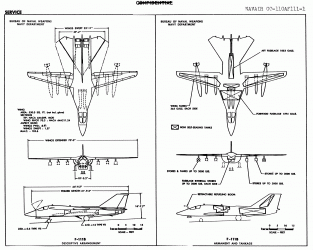


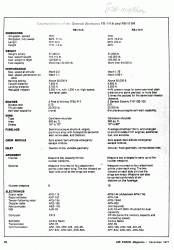
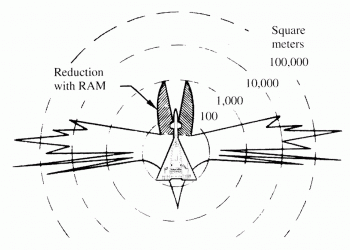
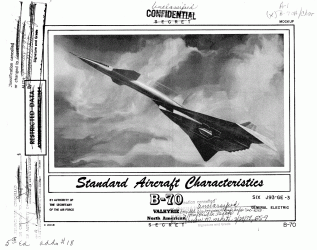
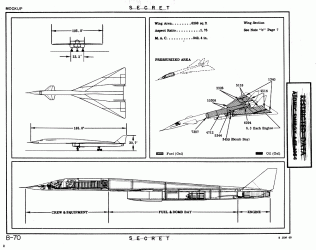
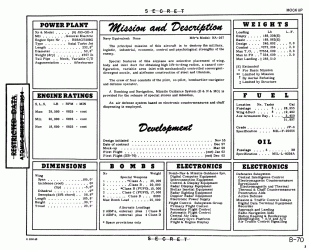
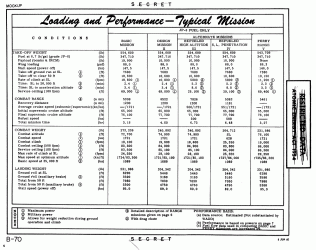

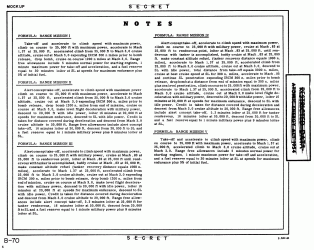

Pony
in Thirdwire: Strike Fighters 1 Series - Mods/Skinning Discussion
Posted
which version?
P-51D or P-51H?